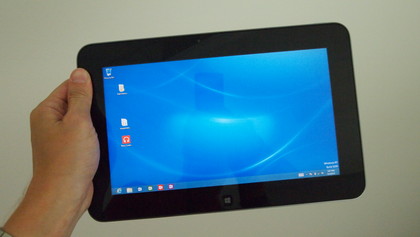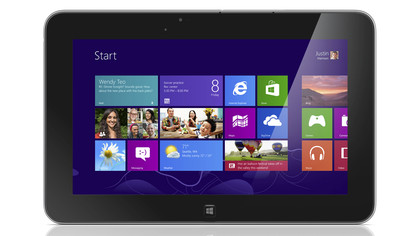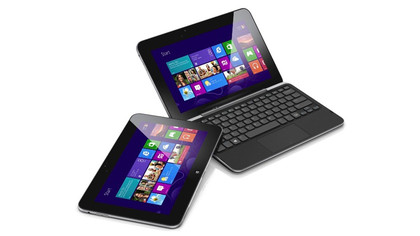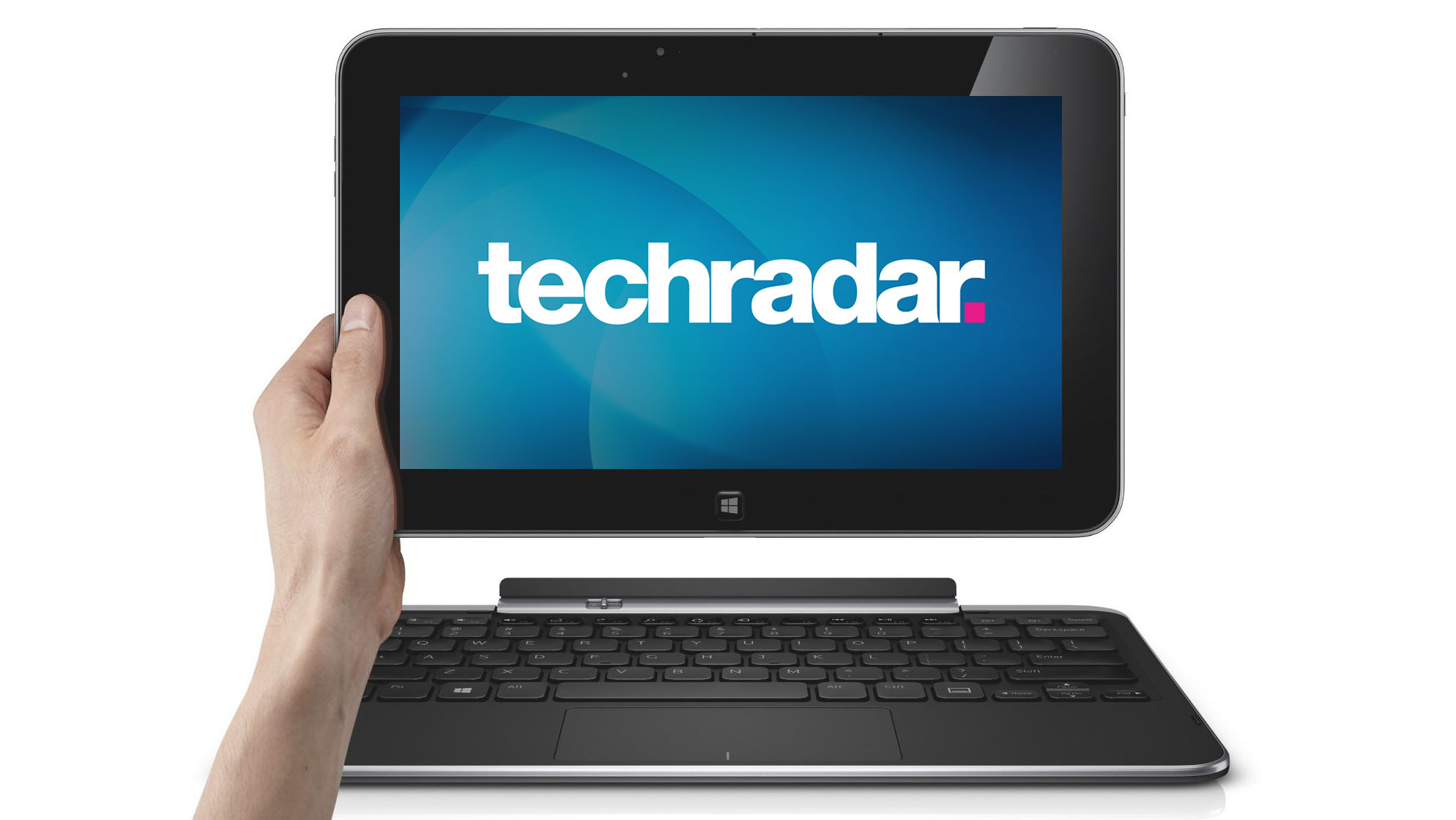TechRadar Verdict
Pros
- +
Great battery
- +
Top price
Cons
- -
Heavy
- -
Cramped
- -
Lacking in power
Why you can trust TechRadar
Either spotting a gap in the market or just out of loyalty to its best buddy Microsoft, Dell has released its own Windows RT slate. Aimed at business users, the 10.1-inch Dell XPS 10 is another transformer-style laptop-tablet hybrid, shipping with an attachable keyboard that turns it into a laptop for working on the move.
The Dell XPS 10 falls into a crowded market, with a host of devices aiming to please similar needs. The Asus VivoTab, Samsung Ativ Tab and of course the Microsoft Surface RT are all offering the same USP, and there are other hybrids such as the Lenovo IdeaPad Yoga 11 too.
While there's no shortage of big players in the market, Dell's late arrival doesn't mean it's too far behind; no RT device has gained any traction to date.

The XPS 10 fits perfectly into Dell's line up of high end machines, joining its XPS 12, XPS 13 and XPS 15 siblings. It looks like an XPS, with a soft black finish and a rubberised texture, and the same rounded chiclet keys adorning the base station.
The XPS range is certainly high quality, and each component of the 10-inch RT tablet follows this design ethos to a tee.
Compared to some notable offenders, Dell has managed to keep the price down to a reasonable level. The base level 32GB device without the keyboard costs £299/US$449.99, the 32GB version with the keyboard dock costs £409/US$599.99, the 64GB without a keyboard costs £339/US$499.99, while the 64GB version with the dock is £444/US$649.99.

That's a significant saving over the Samsung Ativ Tab, and while you'll find it in Dell's business section, it's pretty adept for anyone looking for a more productive tablet experience.
Sign up to the TechRadar Pro newsletter to get all the top news, opinion, features and guidance your business needs to succeed!
The 10-inch Dell XPS 10 tablet is pretty unassuming to look at, and won't be turning any heads on train platforms or Starbucks outlets. It's black all over and rounded at the edges, so it won't be winning any design awards.
It clips into a sturdy hinge with a satisfying mechanical click, and as well as being more usable as a laptop, it can benefit from extra battery life that dramatically expands its lifespan.

So can this Windows RT device inspire where so many have failed? Can Dell offer a great all-day working experience that's still fun to use when it's time to relax at home? Read on as we put the Dell XPS 10 through its paces.
Specifications
If you're late to this Windows RT game, let us put you in the picture. Windows RT devices run on mobile processors, like the ones in your phone, rather than the ones in your PC. That means they're much more power efficient, meaning longer battery lives. It also means they run cooler, so you can get smaller designs.
Inside the Dell XPS 10 is a Qualcomm Snapdragon S4 processor, clocked at 1.5GHz. Clearly, the performance here will be nowhere near the level of a traditional laptop, and it's pretty far below the low power Intel Core i5 chips you'll find on most Ultrabooks.

The choice of processor limits the type of things you can do, too. Forget running desktop apps such as Photoshop or even smaller apps downloaded from the internet, they're not compatible. Any program you run must come from the Windows Store, but Microsoft gives you a full copy of Microsoft Office 2013, which is pretty handy.
We got the top range version, which means there's 64GB of storage built in, giving you the same capacity as the iPad 4's premium model, but for £444 / US$649.99 (around AU$647) instead of £559 / US$699.99 / AU$759 - not a bad saving.
Unlike the iPad, there's opportunity for a load more storage as well, and despite the bad rap that Windows tablets get from 90% of the web's experts, this is a big plus. The Dell has two USB 3.0 ports and a microSD card slot, which will dramatically increase the opportunity for memory.

However, unlike the Asus VivoTab and Samsung Ativ Tab, the Dell XPS 10 only has USB ports on the keyboard dock, so if you opt out or leave it at home, you'll only have a microSD port.
There's also a handy micro HDMI port, but again it's located on the keyboard element. This means that Dell intends for you to carry this like a netbook most of the time, which exposes its design to an inevitable criticism.
When combined with the dock, the Dell XPS 10 weighs an ungainly 1.3kg/45.86oz, which is heavier than most full-form Ultrabooks. As a 10-inch device this seems pretty needless, and it certainly weighs you down when working on the move.

But the upside of this is that unlike the Samsung Ativ Tab, the added weight gives ballast to the device, so it doesn't overbalance when typing.
This constant tug of war between pros and cons shows why Windows tablets are having such a torrid time. Make them too light and they topple over, too heavy and it's ungainly, too powerful and it's too much money, scrimp on price and it becomes inferior. Nobody has got this right, and unfortunately, neither has Dell.
While the Dell XPS 10 certainly carries some hallmarks of the XPS range, unfortunately this hasn't been extended to the screen. The Dell XPS 13 and XPS 12 have some of the best screens available on a Windows computer, but the Dell XPS 10 only includes a 1366 x 768 panel, which is lifeless and dull.

Our high definition movie tests showed a lack of vibrancy, below even the similar specced Microsoft Surface RT.
When connected to the dock, the Dell XPS 10 turns into a netbook, for those who want to type emails and work more comfortably, but the comfort level offered is in itself dubious.
About half this review was written on the Dell XPS 10, which was a tough slog. Firstly, the keys are extremely small, which means frequent mistakes were made. But the most frustrating part was the ease in which mis-presses on the trackpad could skip the cursor around the screen.
